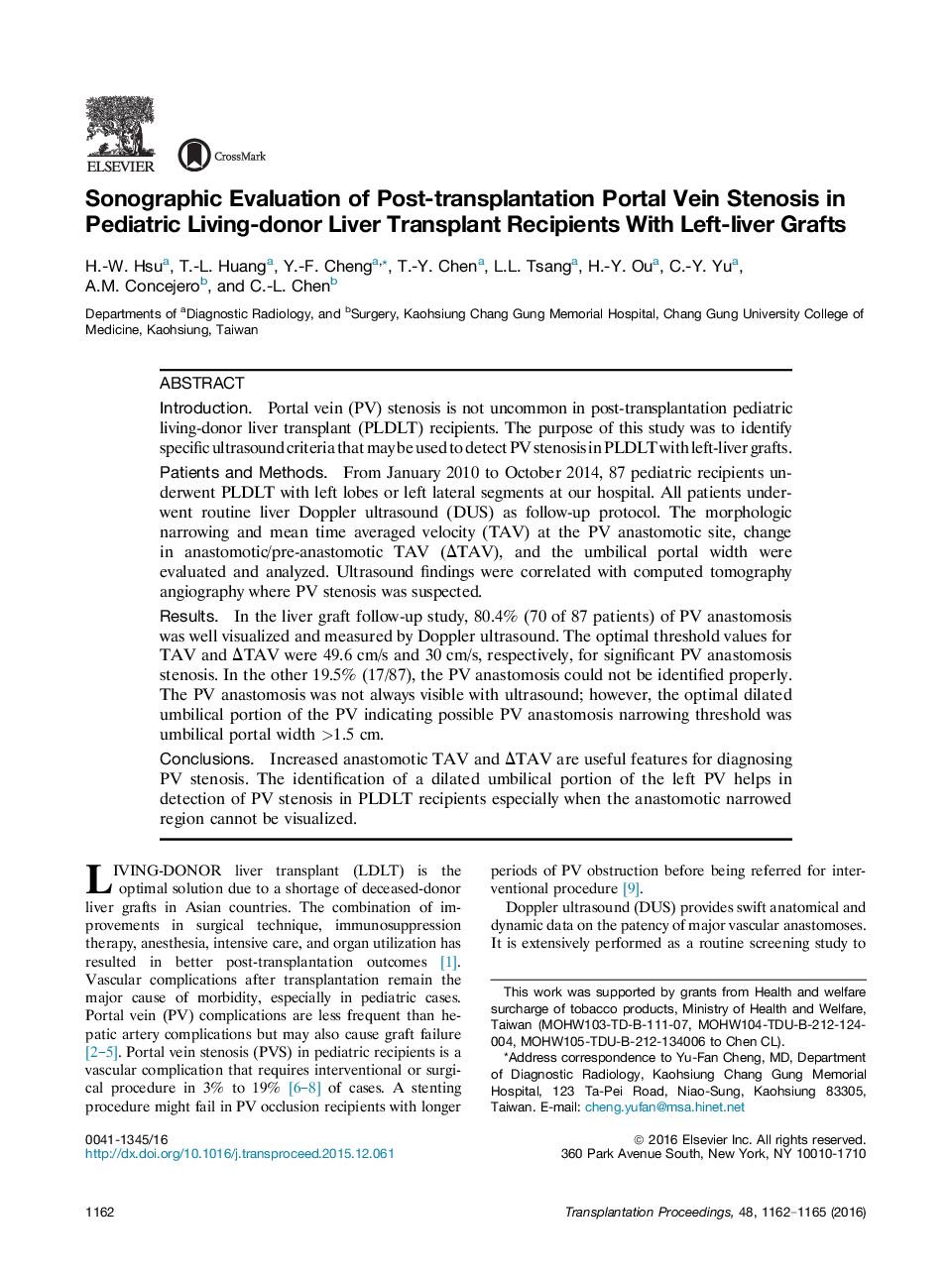| کد مقاله | کد نشریه | سال انتشار | مقاله انگلیسی | نسخه تمام متن |
|---|---|---|---|---|
| 4255981 | 1284506 | 2016 | 4 صفحه PDF | دانلود رایگان |
• A significant number of portal vein anastomoses cannot be adequately identified by ultrasound when the left-liver lobe graft is used.
• Identifying specific ultrasound criteria that may be used to detect portal vein stenosis in pediatric living-donor liver transplant with left-liver grafts.
• Increased umbilical portal vein width is a useful feature for diagnosis of portal vein stenosis in pediatric living-donor liver transplant with left-liver grafts.
IntroductionPortal vein (PV) stenosis is not uncommon in post-transplantation pediatric living-donor liver transplant (PLDLT) recipients. The purpose of this study was to identify specific ultrasound criteria that may be used to detect PV stenosis in PLDLT with left-liver grafts.Patients and MethodsFrom January 2010 to October 2014, 87 pediatric recipients underwent PLDLT with left lobes or left lateral segments at our hospital. All patients underwent routine liver Doppler ultrasound (DUS) as follow-up protocol. The morphologic narrowing and mean time averaged velocity (TAV) at the PV anastomotic site, change in anastomotic/pre-anastomotic TAV (ΔTAV), and the umbilical portal width were evaluated and analyzed. Ultrasound findings were correlated with computed tomography angiography where PV stenosis was suspected.ResultsIn the liver graft follow-up study, 80.4% (70 of 87 patients) of PV anastomosis was well visualized and measured by Doppler ultrasound. The optimal threshold values for TAV and ΔTAV were 49.6 cm/s and 30 cm/s, respectively, for significant PV anastomosis stenosis. In the other 19.5% (17/87), the PV anastomosis could not be identified properly. The PV anastomosis was not always visible with ultrasound; however, the optimal dilated umbilical portion of the PV indicating possible PV anastomosis narrowing threshold was umbilical portal width >1.5 cm.ConclusionsIncreased anastomotic TAV and ΔTAV are useful features for diagnosing PV stenosis. The identification of a dilated umbilical portion of the left PV helps in detection of PV stenosis in PLDLT recipients especially when the anastomotic narrowed region cannot be visualized.
Journal: Transplantation Proceedings - Volume 48, Issue 4, May 2016, Pages 1162–1165
